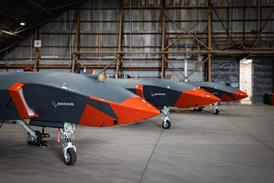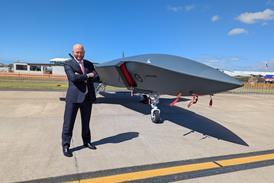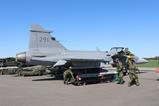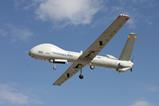Dassault Aviation will complete deliveries under France’s tranche 4 domestic production order for the Rafale fighter this year, following on from its bumper shipments in 2024.
France’s DGA defence procurement agency took receipt of 14 Rafales last year for the nation’s air force, the last of which was accepted on 27 December at Dassault’s Merignac final assembly site.
“This 14th Rafale is the 26th in a batch of 39 aircraft intended to be delivered to the [French] Air and Space Force before the end of 2025,” the DGA says. The jets are being transferred in the type’s latest F4.1 operating standard.
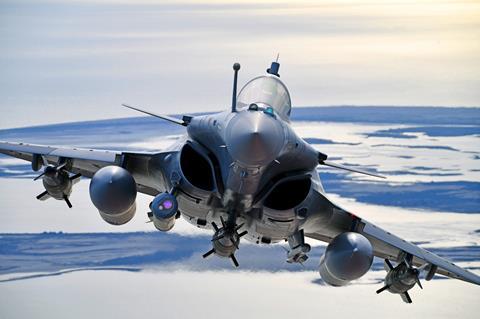
In addition to the 13 examples to be handed over this year, a further one will follow in early 2026, with this to be dedicated to development and testing work performed by the DGA.
Following a brief pause to domestic shipments, Dassault will resume deliveries to its home customer in 2027, under a 42-aircraft, tranche 5 order approved in December 2023 and worth more than €5 billion ($5.1 billion).
The DGA notes that since the Rafale programme’s launch, it has ordered 234 of the aircraft. FlightGlobal’s 2025 World Air Forces directory records France as having 139 of the type in use as of late last year: 98 B/C-model examples used by its air force; and 41 Ms flown by the French navy.
Dassault delivered a total of 21 Rafales in 2024, with that total also including seven for the export market. The company’s current order backlog stands at 220 of the aircraft: 56 for France, and a combined 164 for international buyers Egypt, Indonesia, Serbia and the United Arab Emirates.
In addition to its current active fleet, Paris has also brokered deals over the last few years to sell older air force-operated examples of the Rafale to Croatia and Greece.
“All Rafales of the [French] Air and Space Force and the French navy will be gradually retrofitted to the F4 standard,” the DGA notes. A future F5 configuration will follow during the 2030s.





